Sharjah’s rich heritage is reflected in its forts, traditional homes, and restored public spaces. Inland forts once protected farmlands and desert routes, while coastal defences in Kalba safeguarded fishing areas. Historic houses, built with coral, mudbrick, and palm wood, featured shaded courtyards and wind towers to cope with the heat. Many of these structures have been preserved and transformed into museums. Today, Sharjah balances tradition with modernity by creating innovative cultural landmarks like the House of Wisdom and the Rain Room, all while honouring the legacy of earlier generations.
10 Monuments In Sharjah: Historic And Cultural Landmarks
The monuments in Sharjah, from old forts, towers, and public buildings, show how the city grew through trade, farming, and coastal defence.
1. Sharjah Fort (Al Hisn)
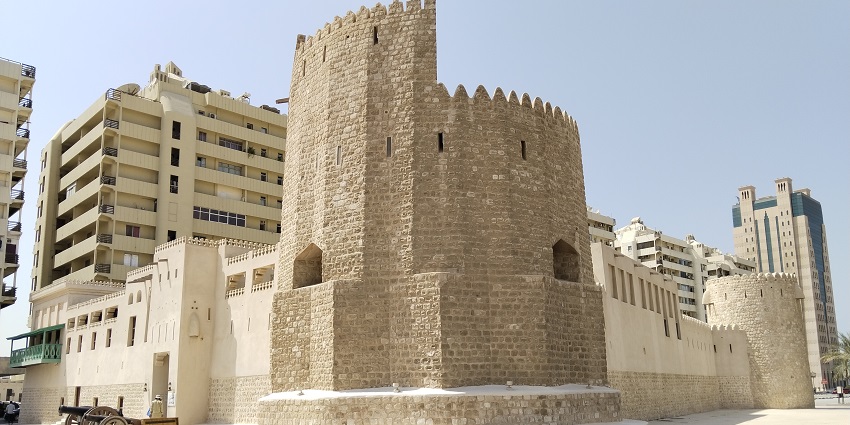
Photo: ZI Jony / Wikimedia Commons
Built in 1823 by Sheikh Sultan bin Saqr Al Qasimi, Sharjah Fort stands in the old city centre and served as both a residence and administrative headquarters. The structure was made using coral stones, palm trunks, and gypsum. Inside are displays of traditional weapons, handwritten documents, coins, and maps showing Sharjah’s early trade routes and alliances. Visitors can see wind towers designed for ventilation, and the defensive towers offer views over the city. Sharjah Fort provides a clear record of the city’s transition from tribal leadership to a structured urban centre.
Location: Al Shuwaihean, Heart of Sharjah
Entry Fee: 10 AED / ₹250 for adults, 5 AED / ₹120 for Children
Timings: 8 AM-8 PM (Saturday-Thursday) & 4 PM-8 PM (Friday)
Suggested Read: Places To Visit In Sharjah
2. Al Noor Mosque
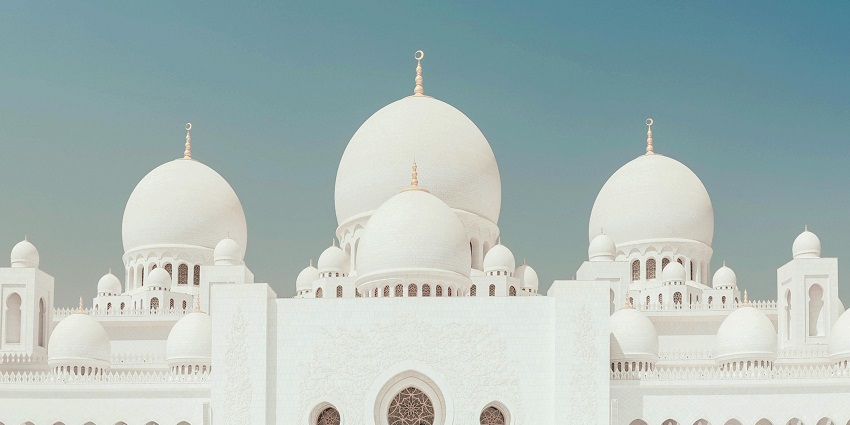
Photo: Maksim Romashkin / Pexels / Image For Representation Only
Completed in 2005, Al Noor Mosque stands on the edge of Khalid Lagoon and reflects Ottoman design with its multiple domes and slender twin minarets. The architecture draws from Istanbul’s Sultan Ahmed Mosque, with arabesque details, carved arches, and Quranic calligraphy throughout the prayer hall. The interior is lit by crystal chandeliers, and the marble mihrab and pulpit are made with fine detailing. The mosque is also known for its colourful illuminations during the Sharjah Light Festival, which draws visitors in large numbers each year.
Location: Khalid Lagoon, Buhaira Corniche
Timings: 10 AM (Guided Tours on Mondays)
3. King Faisal Mosque
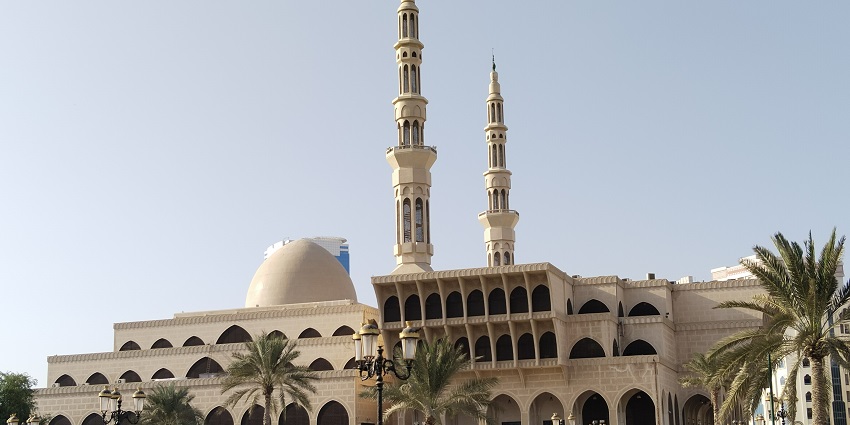
Photo: ZI Jony / Wikimedia Commons
King Faisal Mosque, completed in 1987, is the largest mosque in Sharjah and one of the most prominent religious structures in the emirate. It was a gift from King Faisal bin Abdulaziz Al Saud of Saudi Arabia. The building spans over 12,000 square metres and accommodates up to 16,000 worshippers. The mosque has a modern architectural style with clear Islamic influences, including tall pointed arches, two towering minarets, and a spacious dome-covered prayer hall. Inside, the space is designed for large congregations, especially during Friday prayers and religious festivals.
Location: Al Ittihad Square, Al Soor Area
Suggested Read: Things To Know About Sharjah Mosque
4. Sharjah Museum Of Islamic Civilisation
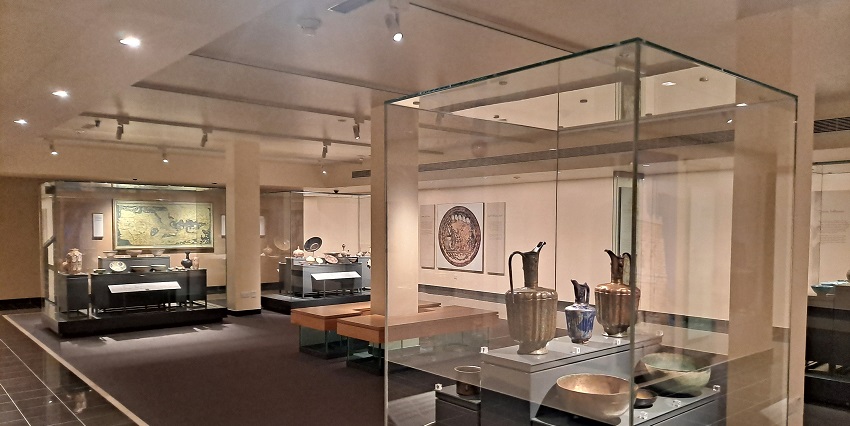
Photo: EditQ / Wikimedia Commons
Located along Corniche Street, the Sharjah Museum of Islamic Civilisation is set inside a former souq building, distinguished by its large golden dome. Inside, the museum houses more than 5,000 Islamic artefacts arranged across several galleries. The museum galleries include displays on Islamic contributions to science, astronomy, medicine, calligraphy, ceramics, and metalwork. One gallery features tools like astrolabes and surgical instruments, while others display art and artefacts from regions such as Persia, North Africa, and Mughal India.
Location: Al Majarrah Area, Corniche Street
Entry Fee: 10 AED / ₹250 for adults, 5 AED / ₹120 for Children
Timings: 8 AM – 8 PM (Saturday-Thursday) & 4 PM – 8 PM (Friday)
5. Al Mahatta Museum
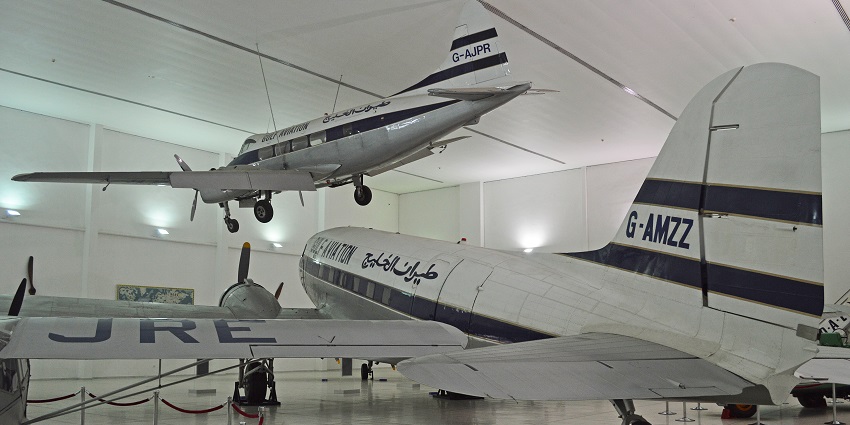
Photo: Alan Wilson / Wikimedia Commons
Al Mahatta Museum is set inside Sharjah’s first airport, which opened in 1932 as a stop for Imperial Airways flights between London and India. The terminal building and hangars have been restored and now hold a collection that traces the history of aviation in the UAE. The museum explains how Sharjah became a key stopover in early air travel and includes rare photographs, flight schedules, and equipment from the time. One section covers the broader history of flight, showing how people moved from using balloons to building spacecraft. Pilot uniforms, weather instruments, and technical parts are displayed throughout.
Location: Al Estiqlal Street, near King Abdul Aziz Street
Entry Fee: 10 AED / ₹250 for adults, 5 AED / ₹120 for Children
Timings: 8 AM – 8 PM (Saturday-Thursday) & 4 PM – 8 PM (Friday)
Suggested Read: Sharjah Art Museum
6. Bait Al Naboodah
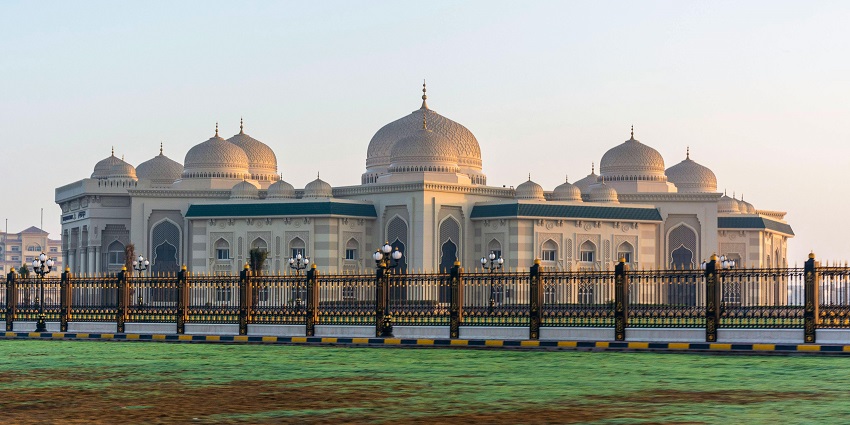
Photo: San Photography / Pexels / Image For Representation Only
Bait Al Naboodah is a mid-19th-century house built by Obaid bin Eissa Al Naboodah, a pearl merchant with trading links to India, Africa, and Europe. Located in the Heart of Sharjah, the house is made of coral stone, palm wood, and teak, with its layout built around a central courtyard. There are living spaces and a majlis on the upper floor, while the lower level is used for storing goods and meeting business partners. The design of the house reflects local climate needs and social norms of the time.
Location: Heart of Sharjah, opposite Sharjah Fort
Entry Fee: 10 AED / ₹250 for adults, 5 AED / ₹120 for Children
Timings: 8 AM – 8 PM (Saturday-Thursday) & 4 PM – 8 PM (Friday)
7. Dhaid Fort
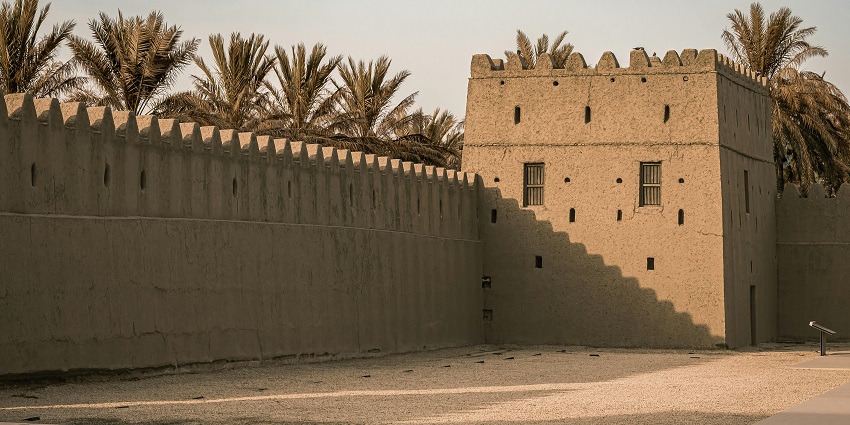
Photo: MAMADO CONF / Pexels / Image For Representation Only
Dhaid Fort stands in the centre of the oasis town of Dhaid, roughly 60 km east of Sharjah city. Built in the early 1800s, it was used by local rulers to secure trade routes and manage affairs in the interior. The structure is made from mudbrick, stone, and palm trunks and includes a central courtyard, thick outer walls, and two square watchtowers placed at opposite corners. It reflects how Sharjah’s inland communities were organised before economic activity shifted to the coast.
Location: Dhaid, Central Region of Sharjah
Timings: 9 AM – 5 PM
Suggested Read: Desert Safari Sharjah
8. Kalba Fort
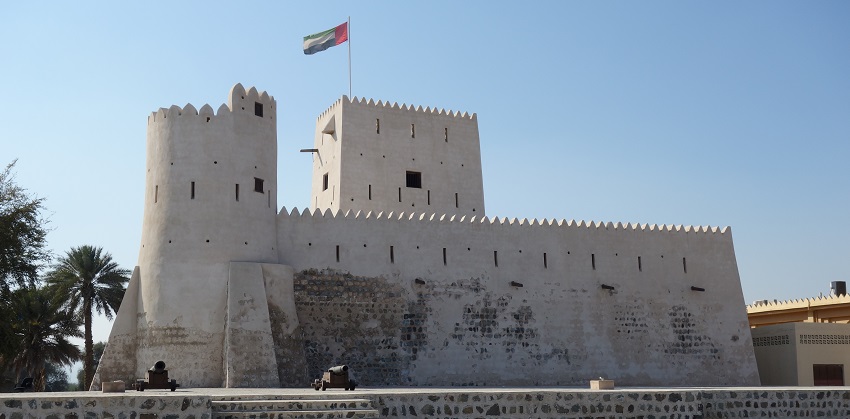
Photo: Marko / Wikimedia Commons
Kalba Fort, close to the Oman border, was built in the mid-18th century and later expanded when the Portuguese took control of parts of the Gulf. The fort stands near Kalba Creek, which was once a vital link for fishing boats and traders entering the area. Its construction used coral stone, mudbrick, and timber. The towers are rounded and built for watching the coast and the nearby mountains. Small openings in the walls were used for defence. Inside, the rooms were used for storing food, weapons, and other supplies and also a space for holding prisoners.
Location: Kalba, Eastern Region of Sharjah
Entry Fee: 10 AED / ₹250 for adults, 5 AED / ₹120 for Children
Timings: 8 AM – 8 PM (Saturday-Thursday) & 4 PM – 8 PM (Friday)
9. House Of Wisdom
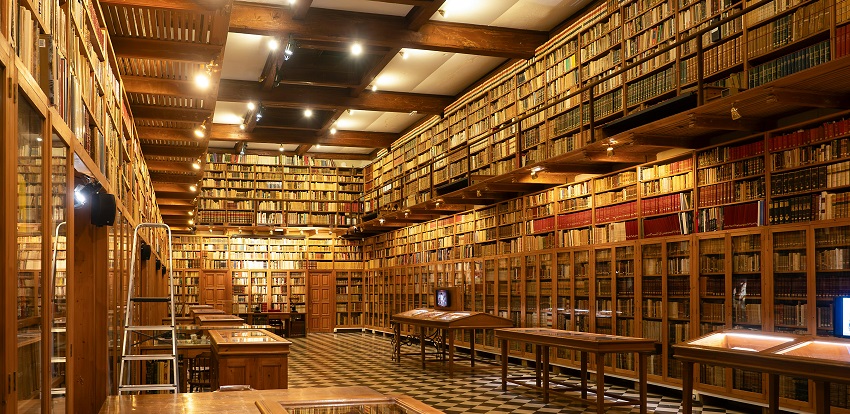
Photo: Manuel Torres Garcia / Pexels / Image For Representation Only
The House of Wisdom is a public library and cultural centre in Sharjah, opened in 2020 as part of the city’s designation as UNESCO World Book Capital. Designed by Sir Norman Foster, the building features a large floating roof that provides shade and helps reduce indoor heat. The structure includes wide reading areas, glass walls, and landscaped gardens with native trees. Inside are more than 100,000 books available in print, digital, and audio formats. It also holds regular events like author readings, educational sessions, and design showcases.
Location: Al Juraina 1, Sharjah
Timings: 9 AM – 9 PM (Saturday – Thursday) & 4 PM – 9 PM (Friday)
Suggested Read: Things To Do In Sharjah To Live Life Sheikh Size
10. Rain Room
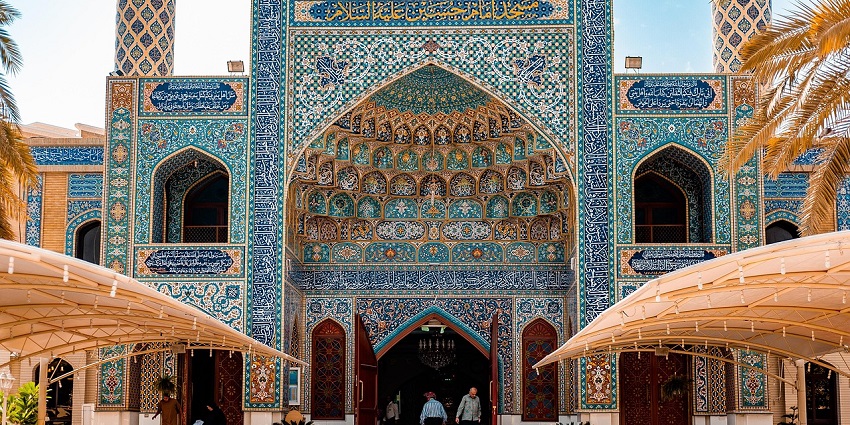
Photo: Olgaozik / Pixabay / Image For Representation Only
The Rain Room is an interactive art installation among the monuments in Sharjah, operated by the Sharjah Art Foundation. It opened in 2018 and was created by the London-based group Random International. Inside a dark, enclosed space, it rains continuously, but motion sensors detect a visitor’s position and stop the rain directly above them, allowing people to walk through the rainfall without getting wet. The system filters and recycles the same water, which is kept clean and reused throughout the day.
Location: Al Majarrah, behind Al Majarrah Park
Entry Fee: 25 AED / ₹ 600 for adults, 15 AED / ₹350 for students
Timings: 9 AM – 9 PM (Saturday – Thursday) & 4 PM – 9 PM (Friday)
Monuments in Sharjah show how the city has changed over time without losing touch with its roots. Old forts, watchtowers, and houses still stand, giving a clear look at how people lived, worked, and protected their land. These places were not left behind, they were repaired and opened to the public. At the same time, Sharjah built new spaces that focus on reading, learning, and art. The city hasn’t tried to replace its past. Instead, it has found a way to keep it part of everyday life. Plan your visit with TripXL and explore Sharjah beyond the usual.
Cover Photo: ZI Jony / Wikimedia Commons


 WhatsApp
WhatsApp
 Twitter
Twitter









